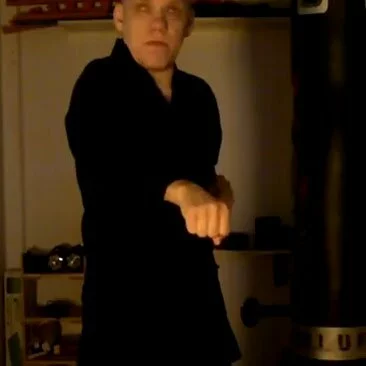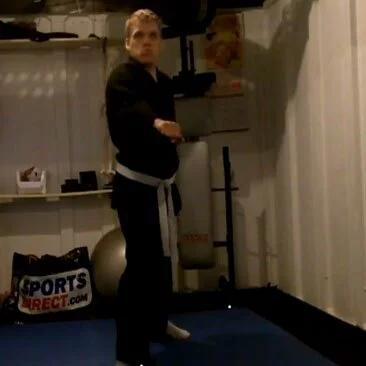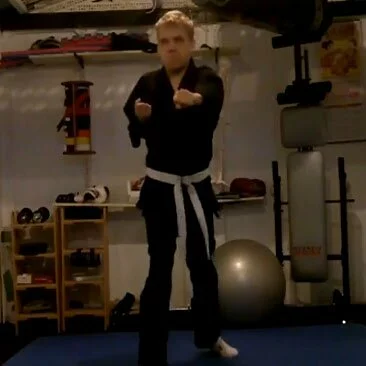Karate Strikes
Karate Strikes are often seen as the key focus area in Karate and indeed other Martial Arts. Strikes, which basically means a way of attacking an opponent, from a human body standpoint, can come in many forms. Punching, kicking, elbowing, headbutting and knife striking are to name but a few. In karate, strikes are mainly used with the hand and arm and from these two areas karate has multiple types of striking techniques. Whiles kicks are also 'strikes', only the strikes generated by the upper body will be discussed in this section.
Chudan Tsuki | Straight Punch

Chudan Tsuki (pronounced chew-dan-zuki) the straight body punch is one of the most basic strikes in karate. Chudan Tsuki in Karate, the punch originates from stationary fist at the side of the waist and with the elbow pointing directly backwards, the arm then travels out and extends and the wrist twists at the end in to the punch. Full details and instructional video on Chudan Tsuki.
Oi Tsuki | Forward Punch

Oi Tsuki (pronounced hoya-zuki) is the forward lunging punch in karate. The Oi Tsuki Lunge punch is always performed over the leading leg. This technique enables extended reach as the shoulder is allowed to flex outwards with the arm during the punch to provide the lunging technique. The Oi Tsuki is found in many basic karate katas and is an ideal range finding punch. Full details and instructional video on Oi Tsuki.
Gyaku Tsuki | Reverse Punch

Gyaku Tsuki is the reverse punch in Karate. The reverse punch uses the same extension and twist as the previous karate punches only the reverse punch of Gyaku Tsuki is performed over the rear leg, and uses the hips to drive a large amount of power into the punch, this easily makes the Gyaku Tsuki Reverse Punch one of the most powerful punching techniques in karate and is capable of breaking ribs and causing severe bodily damage if the application is correct. Learn and watch the full instructional video on Gyaku Tsuki.